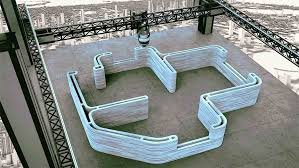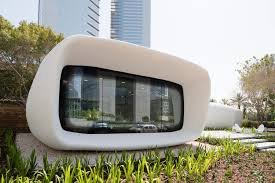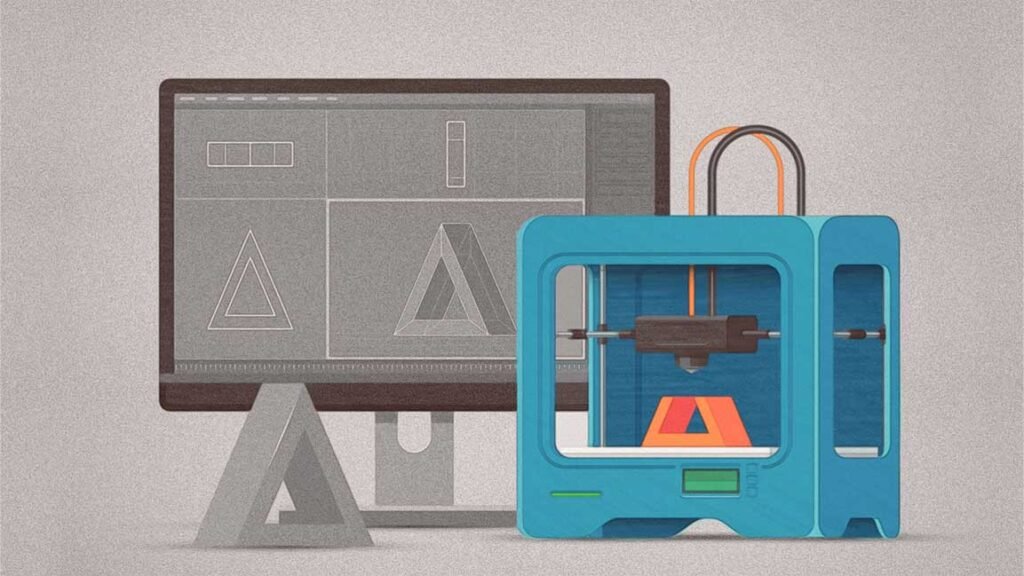The construction industry in the UAE is undergoing a significant transformation, thanks to advancements in 3D printing technology. Known for its ambitious architectural projects and rapid urban development, the UAE has embraced 3D printing as a means to innovate, reduce costs, and promote sustainability.
In this article, we will explore how 3D printing is reshaping the construction landscape in the UAE, the benefits it offers, challenges it faces, and what the future holds for this groundbreaking technology.
What is 3D Printing in Construction?

3D printing, also known as additive manufacturing, involves creating three-dimensional objects layer by layer using specialized printers. In construction, this technology uses materials such as concrete, composite materials, or recycled substances to print building structures.

Unlike traditional construction methods that rely heavily on manual labor and multiple resources, 3D printing can automate large portions of the building process. This leads to faster project completion and significant cost savings.
Why the UAE is Leading in 3D Printing Construction

The UAE has become a global leader in implementing 3D printing technology in construction, driven by its visionary leadership and commitment to innovation. Here are some reasons why the country stands out:
- Government Initiatives: The Dubai 3D Printing Strategy, launched in 2016, aims to have 25% of the city’s buildings constructed using 3D printing technology by 2030.
- Sustainability Goals: With a focus on reducing waste and minimizing environmental impact, 3D printing supports the UAE’s sustainability goals.
- Infrastructure Support: The country has invested in research, development, and infrastructure to support the adoption of 3D printing in construction.
Key Benefits of 3D Printing in UAE Construction
1. Faster Construction Process
3D printers can operate 24/7, completing building components in a fraction of the time it takes using conventional methods. For example, entire houses can be printed in days rather than months.
2. Cost Reduction
With less reliance on manual labor and a reduction in material wastage, construction costs are significantly lowered. The streamlined process also reduces the need for multiple subcontractors.
3. Sustainability and Waste Reduction
3D printing uses precise quantities of materials, minimizing excess waste. Additionally, recycled materials can be integrated into the printing process, further reducing environmental impact.
4. Design Flexibility
Architects and engineers have greater creative freedom with 3D printing, allowing the construction of intricate designs and complex structures that would be difficult and expensive using traditional methods.
5. Improved Safety
By reducing the number of on-site workers and automating hazardous tasks, 3D printing enhances construction site safety.
Notable 3D Printing Projects in the UAE
1. Dubai Municipality Office
Dubai is home to the world’s first 3D-printed office, constructed in just 17 days. The building stands as a testament to the possibilities of 3D printing in creating functional and aesthetically pleasing structures.
2. Residential Housing Projects
Dubai has partnered with global construction firms to create 3D-printed residential units. These projects aim to address housing demands efficiently and affordably.
3. Industrial and Commercial Buildings
The UAE has also ventured into printing warehouses, commercial spaces, and retail structures using advanced 3D printing technology.
Challenges Facing 3D Printing in Construction
While 3D printing holds immense potential, the industry still faces challenges that must be addressed for wider adoption:
- High Initial Investment: Setting up 3D printing facilities and acquiring the necessary equipment can be expensive.
- Limited Skilled Workforce: The need for specialized training in 3D printing technology is a barrier to rapid implementation.
- Material Limitations: Not all construction materials are compatible with 3D printing, limiting the types of structures that can be built.
- Regulatory Hurdles: Compliance with construction codes and regulations remains a challenge, requiring governments to adapt policies to accommodate new technologies.
Future Prospects of 3D Printing in UAE Construction
Despite these challenges, the future of 3D printing in the UAE’s construction sector looks promising. With continuous advancements in technology, materials, and processes, the industry is set to witness significant growth.
The UAE is also investing in research and development, fostering collaboration between government bodies, universities, and private companies to unlock the full potential of 3D printing.
Additionally, as the country moves towards achieving its sustainability goals, 3D printing will play a crucial role in reducing carbon emissions and building eco-friendly infrastructure.
Conclusion
3D printing has already begun to transform the construction landscape in the UAE, offering faster, more cost-effective, and sustainable building solutions. With continued investments, supportive government policies, and a commitment to innovation, the UAE is well on its way to becoming a global leader in 3D-printed construction.
For construction companies, architects, and developers, embracing 3D printing technology presents an opportunity to stay competitive in a rapidly evolving industry. As the technology advances further, we can expect to see even more groundbreaking projects emerging across the UAE.
Also read: Benefits of Pursuing Bilingual Education in the UAE’s Multicultural Society













